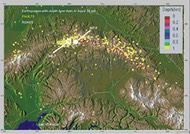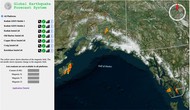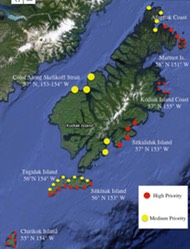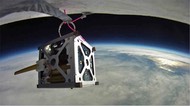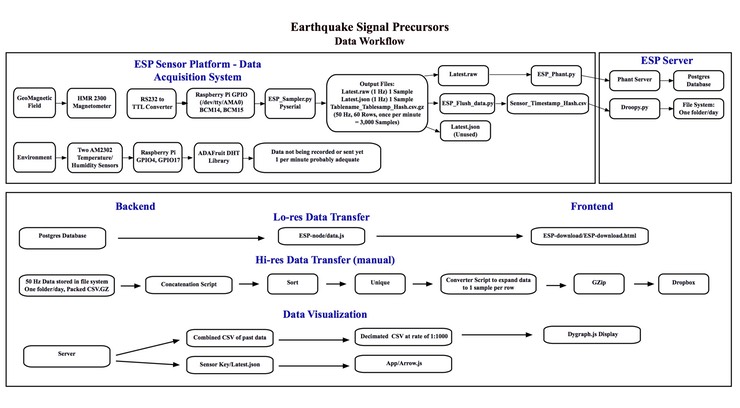ESP!
Earthquake Signal Precursors
Don’t let earthquakes find you before you find them!
The Earthquake Signal Precursors project, ESP, is working to develop an accurate forecast system for an impending earthquake.
The Kodiak High School team has installed nine (9) monitoring stations, four of these were designed and built by the Kodiak High School team and are collecting nano-tesla magnetic field data at 50Hz for the exclusive purpose of detecting magnetic field anomalies that are generated several hours to a few days ^before^ the earthquake occurs. The historical record clearly identifies these anomalies preceding an earthquake by several hours. Our job now, no different from a weather forecast, is to build the algorithm that allows us to predict the increasing risk for an earthquake several hours before the event.

Research by Dr. Friedemann Freund, a NASA research scientist, has identified the anomalous behavior of measurable signals generated by the Earth in the hours preceding an earthquake. Similar to your body experiencing a rise in temperature preceding onset of illness, in the case of an earthquake, the massive buildup of energy at the earthquake’s focal point significantly disrupts the Earth’s magnetic field. To picture this, consider how the current from an activated battery affects a compass. By careful monitoring of Earth’s magnetic field, we are able to detect these earthquake precursor anomalies. This will allow us to inform local communities of the increasing risk for an impending earthquake, saving lives, urban infrastructure, recovery time and extraordinary amounts of money given that industry and other major infrastructure can shutdown ahead of the natural disaster!
Last year the Europa Challenge Kodiak team submitted their first prototype for an Earthquake Signal Precursor (ESP) station. This station acquired data at 1Hz (once per second), this is less than 200,000 data points per day from multiple stations. Still, this data was able to identify several magnetic field anomalies preceding a local earthquake, as verified by USGS seismic data.
For 2016, the entire data infrastructure, hardware, firmware and software, were completely redesigned and rebuilt to accommodate requests by NASA researchers for a 50 Hz sampling rate. This data of almost twenty million samples per day, have already accumulated almost three (3) trillion samples (records). This ^open data^ is available for any and all researchers in the interest of advancing earthquake science research. These ESP monitoring stations have identified 15 magnetic field anomalies preceding an earthquake, just in the past year alone. This team of students continues to work on algorithms to filter, characterize and identify magnetic field anomalies. This will soon allow us to forecast seismic events.
The ESP system is all open source and includes:
• Monitoring stations
• Data transmittal
• Server data acquisition
• Data storage and analysis
• Dynamic visualization of live data
• Open access to data for ongoing research
Meet the Team
Working collaboratively with students around the world, and taking advantage of recent leading edge research in earthquake science, and support from NASA personnel, Kodiak A World Bridge™ High School students have designed and built the infrastructure to monitor and display *earthquake signal precursor* data. This Earthquake Signal Precursors (ESP) system can identify the increasing risk of an impending earthquake, several hours to a few days before the event. ESP is based entirely on Open Source Software and Hardware, and all data is provided openly for ongoing research.
Goal
What would it mean if an Earthquake Signal Precursor system could be developed and effectively identify the energy buildup preceding an earthquake, several hours to a few days in advance of the actual seismic event? This is the goal Kodiak Alaska – A World Bridge™ Team is focused on achieving. This effort has evolved from a single school district, to a Statewide collaborative enterprise. The Kodiak team has developed a web-based WorldWind application to visualize the data live, in the exact location where it is being generated, which happens to be in one of the most seismically active places in the world. Our purpose is to aid in advancing earthquake precursor detection. Adding to the wonders of this technique, the x-y-z strength of the magnetic field anomaly, when interpreted as a vector, appears to point directly at the source of the impending earthquake. Researchers and students around the world have full access to this data.
ESP Station Sourcecode (Github)
The link above allows download of source code for the ESP WebWorldWind app.
The link above allows download of source code for the ESP Station firmware.
Anomaly Detection and Algorithm Development
Link to this page – demonstrates the development of earthquake signal precursors – anomaly detection, and the subsequent research on developing algorithms to recognize these magnetic field preturbations.
Evaluation Video Documentation – Slides, Screenshots and Script
The Evaluation video above may also be viewed as screenshots from the main slides, along with the script from the narration.
ESP Data Workflow
Click on the diagram below to expand. You may also download the graphic.
Link to download ESP Data Workflow Graphic
This page explains ESP Station documentation, project development information and 3D CAD designs of the station components.
Meet the Team – The collaborative 2016 World Bridge team includes:
Mentor: Mr. Seraphim McGann, Kodiak World Bridge Lab, Kodiak Island Borough School District
Kiae Shin, student, Kodiak Island Borough School District
Teyo DeGuzman, student, Kodiak Island Borough School District
Enika Biswas, student, Valley Christian Schools, San Jose, California
Benjamin Chang, student, Kings College London, London, United Kingdom
Gabriel Militao, student, Universidade Estadual de Campinas (UNICAMP) – Campinas – Brazil, Cornell University
Also supporting the ESP Project:
World Bridge Projects Director Ron Fortunato, Trillium Learning
Nidhi Jain, student, Valley Christian Schools, San Jose, California
Khaled Sharif, student, University of Jordan, Amman, Jordan
Farah Salah, student, Princess Sumaya University of Technology, Amman, Jordan
